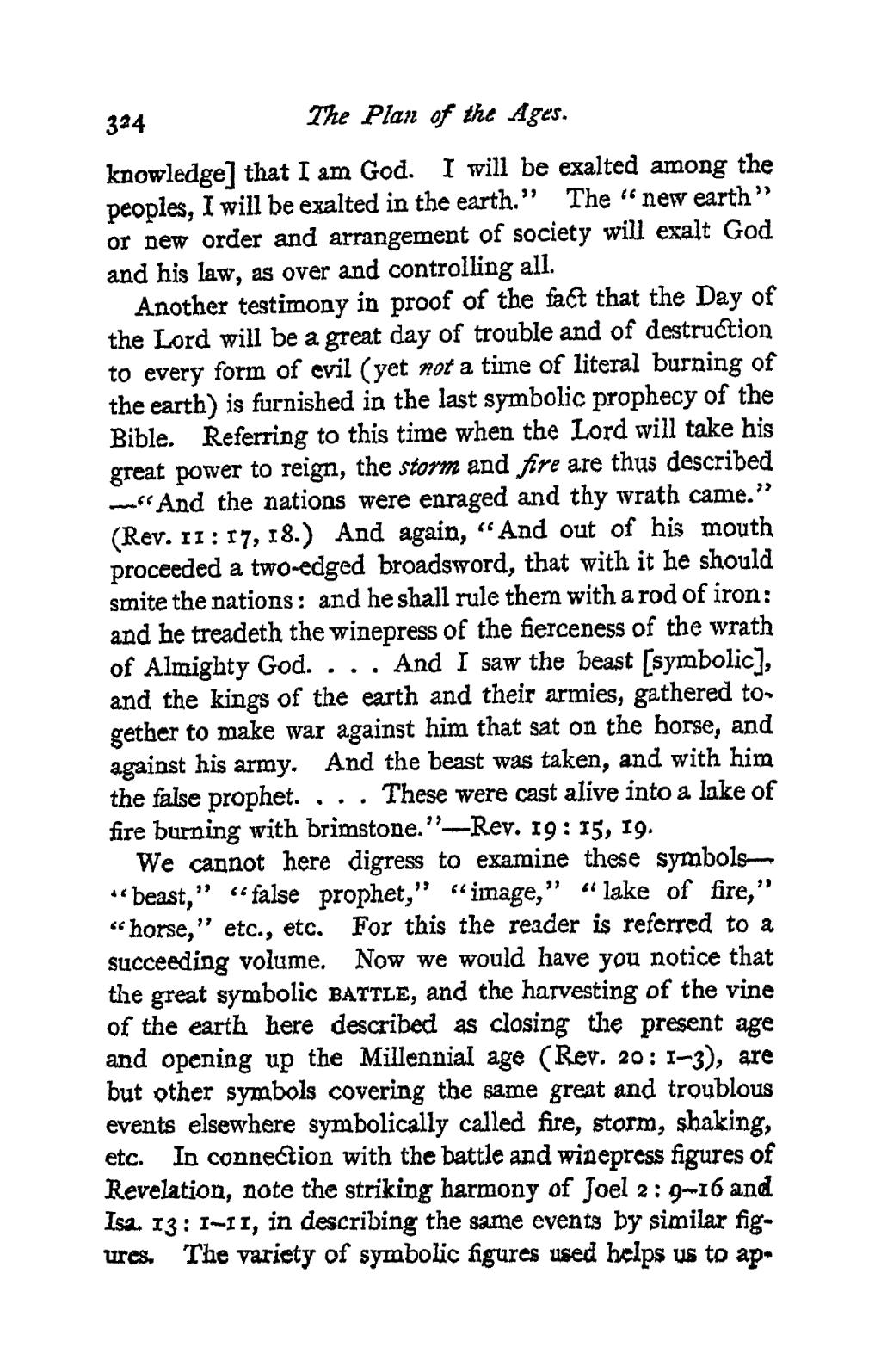324 ?he Plan of the Ages.
knowledge] that I am God. I will be exalted among the peoples, I will be exalted in the earth." The " new earth" or new order and arrangement of society will exalt God and his law, as over and controlling all.
Another testimony in proof of the feft that the Day of the Lord will be a great day of trouble and of destrudtion to every form of evil (yet not a time of literal burning of the earth) is furnished in the last symbolic prophecy of the Bible. Referring to this time when the Lord will take his great power to reign, the storm and fire are thus described
"And the nations were enraged and thy wrath came/*
(Rev. ii : 17, 1 8.) And again, "And out of his mouth proceeded a two-edged broadsword, that with it he should smite the nations : and he shall rule them with a rod of iron : and he treadeth the winepress of the fierceness of the wrath of Almighty God. . . . And I saw the beast [symbolic], and the kings of the earth and their armies, gathered to- gether to make war against him that sat on the horse, and against his army. And the beast was taken, and with him the false prophet. . . . These were cast alive into a lake of fire burning with brimstone." Rev. 19 : 15, 19.
We cannot here digress to examine these symbols "beast," "false prophet/' "image/' "lake of fire/' "horse/' etc., etc. For this the reader is referred to a succeeding volume. Now we would have you notice that the great symbolic BATTLE, and the harvesting of the vine of the earth here described as dosing the present age and opening up the Millennial age (Rev. 20: 1-3), are but other symbols covering the same great and troublous events elsewhere symbolically called fire, storm, shaking, etc. In connexion with the battle and winepress figures of Revelation, note the striking harmony of Joel 2 : 9-16 and Isflu 13 : i~i r, in describing the same events by similar fig- ures. The variety of symbolic figures used helps us to ap*
�� �
